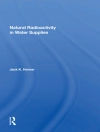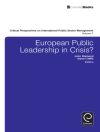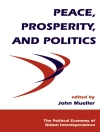The unmarked mass graves left by war and acts of terror are lasting traces of violence in communities traumatized by fear, conflict, and unfinished mourning. Like silent testimonies to the wounds of history, these graves continue to inflict harm on communities and families that wish to bury or memorialize their lost kin. Changing political circumstances can reveal the location of mass graves or facilitate their exhumation, but the challenge of identifying and recovering the dead is only the beginning of a complex process that brings the rights and wishes of a bereaved society onto a transnational stage.
Necropolitics: Mass Graves and Exhumations in the Age of Human Rights examines the political and social implications of this sensitive undertaking in specific local and national contexts. International forensic methods, local-level claims, national political developments, and transnational human rights discourse converge in detailed case studies from the United States, Argentina, Chile, Peru, Spain, Bosnia-Herzegovina, Greece, Rwanda, Cambodia, and Korea. Contributors analyze the role of exhumations in transitional justice from the steps of interviewing eyewitnesses and survivors to the painstaking forensic recovery and comparison of DNA profiles. This innovative volume demonstrates that contemporary exhumations are as much a source of personal, historical, and criminal evidence as instruments of redress for victims through legal accountability and memory politics.
Contributors : Zoë Crossland, Francisco Ferrándiz, Luis Fondebrider, Iosif Kovras, Heonik Kwon, Isaias Rojas-Perez, Antonius C. G. M. Robben, Elena Lesley, Katerina Stefatos, Francesc Torres, Sarah Wagner, Richard Ashby Wilson.
表中的内容
Foreword
—Richard Ashby Wilson
Introduction: The Ethnography of Exhumations
—Francisco Ferrándiz and Antonius C. G. M. Robben
PART I. EXHUMATIONS AS PRACTICE
Chapter 1. Forensic Anthropology and the Investigation of Political Violence: Lessons Learned from Latin America and the Balkans
—Luis Fondebrider
Chapter 2. Exhumations, Territoriality, and Necropolitics in Chile and Argentina
—Antonius C. G. M. Robben
Chapter 3. Korean War Mass Graves
—Heonik Kwon
Chapter 4. Mass Graves, Landscapes of Terror: A Spanish Tale
—Francisco Ferrándiz
Chapter 5. The Quandaries of Partial and Commingled Remains: Srebrenica’s Missing and Korean War Casualties Compared
—Sarah Wagner
Photo Essay
9/11: Absence, Sediment, and Memory
—Francesc Torres
PART II. EXHUMATIONS AS MEMORY
Chapter 6. Buried Silences of the Greek Civil War
—Katerina Stefatos and Iosif Kovras
Chapter 7. Death in Transition: The Truth Commission and the Politics of Reburial in Postconflict Peru
—Isaias Rojas-Perez
Chapter 8. Death on Display: Bones and Bodies in Cambodia and Rwanda
—Elena Lesley
Epilogue
—Zoë Crossland
List of Contributors
Index
* * * * *
Foreword
Richard Ashby Wilson
In May 1988, I drank coffee in the sweltering heat with Father José Parra Novo, a Spanish priest nicknamed ‘Papito, ‘ in the imposing Catholic church compound in Cahabón, a regional town center in the department of Alta Verapaz in highland Guatemala. I fumbled to explain my fieldwork research, which sought to understand how villagers reconstructed their lives and communities after three decades of armed conflict. ‘Ah, ‘ Papito said immediately, ‘Then you must go to Pinares.’ Why, what happened there?’ I asked. He replied, ‘You’ll find out soon enough.’ Arriving in Pinares, I encountered a small, sleepy rural Maya-Q’eqchi’ village surrounded by cacao plantations. At first, I found nothing out of the ordinary. Farmers tended their small plots of corn, beans, and cacao, women washed clothes in the river, youth played football on a meticulously groomed field, and the whole community attended the small village chapel perched on a hillside.
Only after three days did my hosts begin to open up, and recount how, in August 1982, the Guatemalan army arrived from the military base in Cobán. With local men from the ‘Civil Patrol’ leading them house to house, the soldiers rounded up twenty-one male villagers who were accused of being communist agitators for agrarian reform. The soldiers marched the men to the edge of the village, shot them, and threw their corpses into a pit in the ground. This was no ‘clandestine grave.’ Everyone in the village knew exactly where it was located—even the children motioned in the direction of the pit when asked where the men were mukmu, Q’eqchi’ for ‘buried, ‘ or ‘hidden.’ The bodies lay where they had been tossed, untouched and unrecovered. Their relatives were too terrorized to exhume them, and life went on in the village, as abnormal.
Eight years later, in 1996, I traveled again to Cahabón with staff from (REMHI) (Recuperation of Historical Memory Project), the Catholic Church’s truth commission project. Families streamed into the town from the surrounding villages to tell their stories to the REMHI statement takers. The mere presence of Q’eqchi’-speaking REMHI personnel opened a space for highland indigenous peoples to testify about the past. Once public secrets were articulated outside the community, families in Pinares rapidly turned to pursuing avenues of legal remedy. The massacre was, for the first time, formally denounced at the Congressional Human Rights Office and the Office of the Public Prosecutor. Villagers contacted the United Nations Mission in Guatemala (MINUGUA), which helicoptered a forensic team to the village in May 1996 to begin exhumations. Under constant threat from armed local perpetrators, the forensic team worked day and night for eight days. They removed the bodily remains to the capital for further investigation, before returning them for a proper burial in the community. This story was repeated across the country, as seventeen mass graves were exhumed in 1996 by forensic anthropologists working in conjunction with the UN Mission, and many dozens more followed in subsequent years. Once they got under way, the forensic teams worked relatively rapidly, but criminal accountability for the perpetrators took longer, and it is a painful truism that the wheels of justice, especially in Guatemala, turn agonizingly slowly. Twenty-five years after my first trip to Pinares, evidence from exhumations across the Guatemalan highlands became central to the prosecution case in the criminal trial of military dictator Efraín Ríos Montt, whose military junta brought unprecedented violence and terror to rural Guatemala in 1982-1983.
As this excellent and timely volume shows in detailed case studies from around the world, regimes that massacre a civilian population as part of a widespread and systematic policy of terror create social disorder and disruption. Their methods generate physical and social entropy, with regard to both the bodies of victims and the body politic. As several contributors observe, exhumations and DNA testing reassemble bodies and reattach names, and thereby are part of a wider collective process of memorializing the dead, reordering the social world, and reclaiming territory from military occupation. Exhumations are a social process that reconfigures time, space, and identity, and they can be understood historically and subjectively, with attention to the symbolism and meaning of the constituent acts. At the same time, the social dimensions of exhumations encounter other forms of knowledge and authority, including forensic science and the law, each with its own methods of creating and evaluating evidence. Both law and science, despite their universalizing ambitions, necessarily construct a partial account of the past. The approaches in each of the fields represented and analyzed in this book—photographic art, ethnography, history, forensic anthropology, and criminal law—are motivated by distinct principles and based on divergent epistemologies. Understanding how they interact and inform and influence one another, and ultimately shape our comprehension of ‘who did what to whom’ and what it has meant, is a formidable challenge. This volume rises to that challenge and opens up new avenues of global comparison, investigation and comprehension.
As if the task of understanding the past were not daunting in itself, the chapters in this collection provide fascinating accounts of the political and legal struggles surrounding exhumations, and these often include popular mobilizations that are both intensely local and globally connected. I know of no other volume that addresses the topic of exhumations as profoundly, and in as many disparate cases in Latin America, Africa, Europe, and Asia. From the chapters herein we learn how exhumations and the reconstructing of past violations are embedded in political movements that ignite political agency and express a newfound sense of citizenship and sovereignty. In recognizing this, we need not lose sight of the fact that the social processes of remembering are often acts of faith and solidarity with the dead, and ways of articulating a sense of dignity and worth among the living. And the anthropological voice and perspective comes through clearly; the empirical documentation and ethnographic analysis presented here should provide activists, scholars, and policymakers alike with new insights into the symbolism and granular-level politics of exhumations. I recommend this book to all those hoping to understand postconflict societies and what happens once they finally address unfinished business, and unearth the grim realities handed down to them from violent historical episodes.
关于作者
Francisco Ferrandiz is Associate Researcher at the Spanish National Research Council (CSIC) and author of many books, including El pasado bajo tierra: Exhumaciones contemporaneas de la Guerra Civil. Antonius C. G. M. Robben is Professor of Anthropology at the University of Utrecht. He is author of Political Violence and Trauma in Argentina and editor of Iraq at a Distance: What Anthropologists Can Teach Us About the War, both available from the University of Pennsylvania Press.












